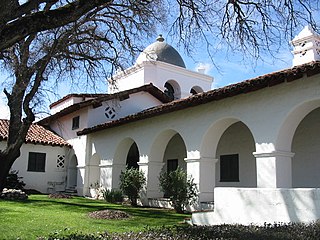
The Hacienda is the current name for a hotel in Monterey County, California, that was completed in 1930 for use by William Randolph Hearst as temporary housing for his employees and guests and headquarters for activities taking place on the surrounding land. The lodge building, designed by architect Julia Morgan, replaced and expanded upon an earlier wooden structure known as the Milpitas Ranch House which was destroyed by fire in the 1920s. The 1930 hotel has also been known as Milpitas Hacienda, Hacienda Guest Lodge and Milpitas Ranchhouse, under which name the property was placed in the National Register of Historic Places on December 2, 1977.

The Los Alamos Ranch House is a historic adobe house near Los Alamos in northern Santa Barbara County, California. The house, the centerpiece of Rancho Los Alamos, was built about 1840, and is one of the best-preserved examples of domestic architecture from California's Mexican period. The building was designated a National Historic Landmark in 1970.
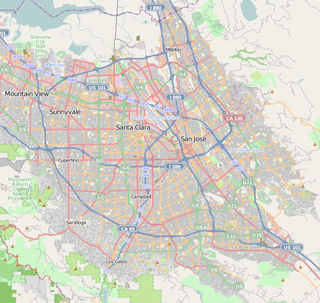
The Picchetti Winery, also known as the Picchetti Ranch, is a winery located at 13100 Montebello Rd., Cupertino, California in the Picchetti Ranch Open Space Preserve. The Picchetti brothers, Secondo and Vincenzo, for whom the ranch was named, were among the earliest settlers to plant grapes on this ridge, which they named "Monte Bello" or "beautiful mountain." This ridge was later to become one of Santa Clara County's important vineyard areas.

San Bernardino Ranch is an historic ranch house in the southern San Bernardino Valley near the San Bernardino National Wildlife Refuge in extreme southeast Cochise County, Arizona, United States. It is significant for its association with the beginning of cattle ranching in southern Arizona and northern Mexico. The ranchland and valley are part of the headwaters region of the Yaqui River.

The Minnie Hill Palmer House, also known as The Homestead Acre, is the only remaining homestead cottage in the San Fernando Valley. The cottage is a redwood Stick-Eastlake style American Craftsman-Bungalow located on a 1.3-acre (0.53 ha) site in Chatsworth Park South in the Chatsworth section of Los Angeles, California.

Edgemoor Farm Dairy Farm was built as part of a dairy farm in 1913 in Santee, California. Edgemoor was part of a Spanish land grant to Maria Antonio Estudillo who married Miguel de Pedrorena, a native of Madrid. By the 1850s, through a variety of ways, individuals obtained portions of the grant and began to farm. Walter Hamlin Dupee purchased Edgemoor Farm in 1913 and built it into a national award-winning dairy farm, polo pony ranch and early tourist attraction.

The José Serrano Adobe is a historic 1863 adobe house in Lake Forest, Orange County, California. The property is one of four historic buildings in the Heritage Hill Historic Park. It was listed on the National Register of Historic Places on May 24, 1976.

The Twaddle-Pedroli Ranch, also known as the Jackson-Harp Ranch, Rand Property and the Wilson Commons Ranch, was purchased by John Twaddle in 1869 for $5,000. The ranch, several miles to the north of Franktown, Nevada and adjacent to the Bowers Mansion, was then known as the Sturtevant Ranch. The property amounted to 630 acres (250 ha).
Rancho Laguna de Los Palos Colorados was a 13,316-acre (53.89 km2) Mexican land grant in the Berkeley Hills within present-day Contra Costa County, California.
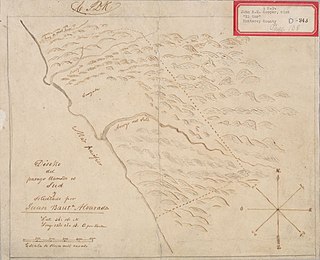
Rancho El Sur was a 8,949.06-acre (36.22 km2) Mexican land grant in present-day Monterey County, California on the Big Sur coast given in 1834 by Governor José Figueroa to Juan Bautista Alvarado. The grant extended from the mouth of Little Sur River inland about 2.5 miles (4.0 km) over the coastal mountains and south along the coast past the mouth of the Big Sur River to Cooper's Point. In about 1892, the rancho land plus an additional 3,000 acres (1,200 ha) of resale homestead land was divided into two major parcels. The southern 4,800 acres (1,900 ha) became the Molera Ranch, later the foundation of Andrew Molera State Park. The northern 7,100 acres (2,900 ha) formed the El Sur Ranch.
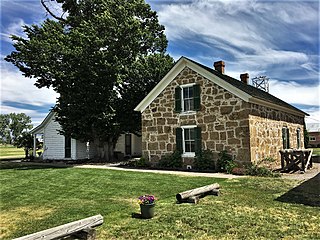
The Dangberg Home Ranch Historic Park is a Douglas County, Nevada, USA, park, preserving one of the state's first ranches.
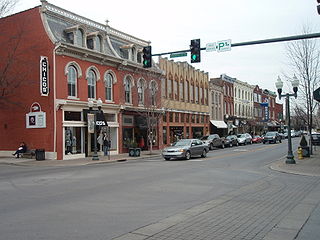
Franklin Historic District is a historic district in Franklin, Tennessee that was listed on the National Register of Historic Places in 1972. It was created to preserve historic commercial and residential architecture in a 16-block area of the original, downtown Franklin around the north, west, and south of the town square.

The Patrick Rodgers Farm, or Rodgers Ranch is a historic home and ranch located in Pleasant Hill, California. In 1991, the property was listed on the National Register of Historic Places.

The Old Borges Ranch is a 1,035 acres (419 ha) Historic District containing four contributing buildings, in the Diablo Foothills of the northern Diablo Range, within the 2,600-acre (1,100 ha) Walnut Creek Open Space in Contra Costa County, California.

The Diamond Ranch was established near Chugwater, Wyoming in 1878 by George Rainsford, a New York native who came west to breed horses. Rainsford, an architect, designed many of the structures at the ranch. Horses bred at the ranch, mainly Morgans and Clydesdales, were widely known and sought after. The ranch was named after Rainsford's Diamond brand, one of the two oldest registered brands in Wyoming. Unlike most brands, which remain with the owner, the Diamond brand has remained with the property. The ranch features extensive barns for breeding and raising horses, as well as a more modest ranch house. In its prime there were formal gardens.

The Constantine Sneed House, also known as Windy Hill, is a historic mansion in Brentwood, Tennessee. It was one of four houses built by the Sneed family on the Old Smyrna Road.

The Maysville Historic District is a historic district in Mobile, Alabama, United States. The district covers 451 acres (183 ha) and contains 1121 properties located southwest of downtown and directly south of the Leinkauf Historic District. Platted in 1871 in the midst of a recession in Mobile, the neighborhood did not begin to develop until the late 1890s. Maysville has long been a working class neighborhood; many late 1890s and early 1900s houses were bungalows and cottages, some with modest Victorian influences. Some larger and more decorated houses were built in the northeastern portion of the neighborhood. In the early 20th century and into World War I and World War II, the Port of Mobile and its shipyards became a focus of Mobile's economy, and the population grew in response. The early 20th century saw many craftsman-style bungalows and four square houses built. Minimalist Traditional and some ranch-style houses became popular around and after World War II. Notable contributing buildings in the district are Ladd–Peebles Stadium, built in 1948, and Williamson High School, built in 1965. The district was listed on the National Register of Historic Places in 2013.

The San Rafael Ranch, formerly known as the Greene Ranch, is a historic cattle ranch located in the San Rafael Valley about a mile and a half north of Lochiel, Arizona, near the international border with Sonora, Mexico.

Rancho de los Quiotes, today known as the Leo Carrillo Historic Park, is a historic estate near Carlsbad, California. The rancho was built as a weekend retreat for actor Leo Carrillo, who designed the property in the style of Spanish hacienda estates. Situated on land once inhabited by the Luiseño people, the original 2,538 acres (1,027 ha) were located on an old Spanish land grant. Carrillo purchased 1,700 acres (690 ha) for $17 an acre in 1937, adding additional acreage two years later. Over the next few years he designed and built a working rancho in tribute to his family, the Carrillo family of California, who arrived in California in the 1700s.

The Diamond A Ranch, or Spring Ranch, is a ranch in the upper Wind River valley of Fremont County, Wyoming. The site was first settled by John Robert McDonald, a Scottish immigrant who had a 160-acre (65 ha) homestead on the site in 1891. McDonald sold the property to John Williamson in 1907. Jack Williamson and his brother David were Scots as well, working as stonemasons. The Williamsons had worked in New York City, at Princeton University, at the Mormon Temple in Salt Lake City and on bridge work for the Union Pacific Railroad. In 1888 they came from Salt Lake City to Lander, where they worked on a number of projects, as well as in Rawlins and at Fort Washakie. They joined their sister Jean Williamson Sinclair at the Upper Circle Ranch near Dubois in the early 1890s. David Williamson married Annie McKenzie, a friend of his sister's who had come with her from Scotland. When Jack died of tick fever in 1916, David moved to the ranch with his family. After David's death in 1934, his wife Annie operated the ranch until she sold it in 1966. The ranch is notable as one of several ranches established by Scottish immigrants.




















